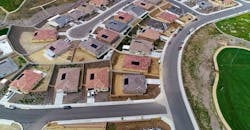Exploring the Potential of Community Microgrids Through Three Innovative Case Studies
Community microgrids represent a burgeoning solution to meet the energy needs of localized areas and regions. These microgrids are clusters of interconnected energy resources, including solar photovoltaic (PV) arrays and battery energy storage systems, designed to provide reliable and sustainable power to a specific area. By integrating various renewable energy sources and storage technologies, community microgrids can enhance energy resilience, reduce dependency on centralized grids, and mitigate the impact of power outages.
These microgrids offer opportunities for community engagement and ownership, allowing residents to actively participate in generating and managing their energy supply. As concerns about climate change and energy security continue to grow, community microgrids are poised to play a pivotal role in transitioning towards a more decentralized and sustainable energy landscape.
Let's explore three diverse examples of community microgrids to understand their applications, benefits, and innovations. Each case provides unique insights into how microgrids address local challenges, showcasing their versatility in revolutionizing energy systems and promoting sustainability.
Powering Energy-Smart Connected Homes
KB Home’s groundbreaking Energy-Smart Connected Communities in Menifee, California, features over 200 cutting-edge, all-electric homes powered by solar energy and equipped with individual battery storage. These homes will be interconnected through a microgrid powered by a communal battery that will fuel the entire neighborhood, ensuring resilience against power outages through a self-sustaining energy ecosystem.
These homes will serve as a blueprint for sustainable and resilient home development, supported by a $6.65 million Department of Energy grant. Each of the 219 homes will be designed to meet the Department of Energy's Zero Energy Ready Home criteria, boasting energy-efficient features that can reduce average energy consumption by up to 40%. With SunPower Equinox solar systems, SunVault Storage batteries, high-efficiency appliances, and smart technologies from Schneider Electric, these state-of-the-art, all-electric homes are designed to be connected to a microgrid powered by a large, shared community battery adding greater energy resilience. This project represents a pioneering example of sustainable living and a blueprint for new home communities of the future.
Increasing Community Resilience Across Four Facilities
The Daughters of Mary of Immaculate Conception established an advanced microgrid across their campus in New Britain, Connecticut, offering a multifaceted solution to address various community needs. The microgrid ensures operational continuity and resilience by interconnecting four critical facilities within the 137-acre campus, allowing essential services and care to persist even amidst grid disruptions. Boasting a robust infrastructure, the microgrid provides uninterrupted access to electricity during power outages, leveraging 1.3 megawatt hours of battery storage capacity alongside 1.2 megawatts of solar generation and a 250-kW natural gas generator for emergency backup.
This groundbreaking project significantly enhances energy reliability by consolidating four separate building services into a unified system that is adaptable to various operational modes during islanded operations. Notably, the microgrid has yielded substantial reductions in energy costs, with a remarkable 18% decrease observed in total electricity expenses from 2023 versus 2022. Furthermore, the microgrid's transition to 100% renewable energy in island mode underscores its pivotal role in carbon reduction efforts, with an estimated annual reduction of 1,300 metric tons of greenhouse gas emissions. This innovative renewable energy hub exemplifies sustainability while fortifying critical facilities against unforeseen emergencies.
Fostering Sustainable Senior Living
A senior care facility in Canada is spearheading the development of a progressive housing complex comprising 128 units tailored for seniors in Sainte Foy, Quebec. This social housing initiative seeks to enhance energy efficiency while serving as a model for achieving substantial energy savings, with the potential for replication in similar community housing projects province wide.
At the heart of this endeavor lies the integration of a microgrid featuring a 50kW/100kWh Battery Energy Storage System, a Building Management System, and a 300kW Natural Gas Combined Heat and Power solution. This comprehensive microgrid solution includes an Energy Control Center, ASCO Automatic Transfer Switches, and auxiliary power distribution panels. By leveraging cloud-based energy management algorithms and interfacing with Hydro Quebec's load curtailment program, the microgrid promises optimized energy costs, enhanced resiliency, and improved resource optimization. The microgrid ensures robust operational efficiency while empowering the customer with heightened power resiliency through remote monitoring, forecasting capabilities, and grid-tied peak demand management strategies.
Community microgrids stand at the forefront of a transformative shift towards decentralized and sustainable energy solutions. These interconnected networks of renewable energy resources enhance energy resilience and foster community engagement and ownership in energy management. As demonstrated by the diverse examples explored, microgrids offer multifaceted benefits ranging from improved energy reliability to reduced carbon emissions. With continued advancements and widespread adoption, community microgrids are poised to revolutionize the energy landscape, paving the way for a more resilient, sustainable future.
Sponsored by:










